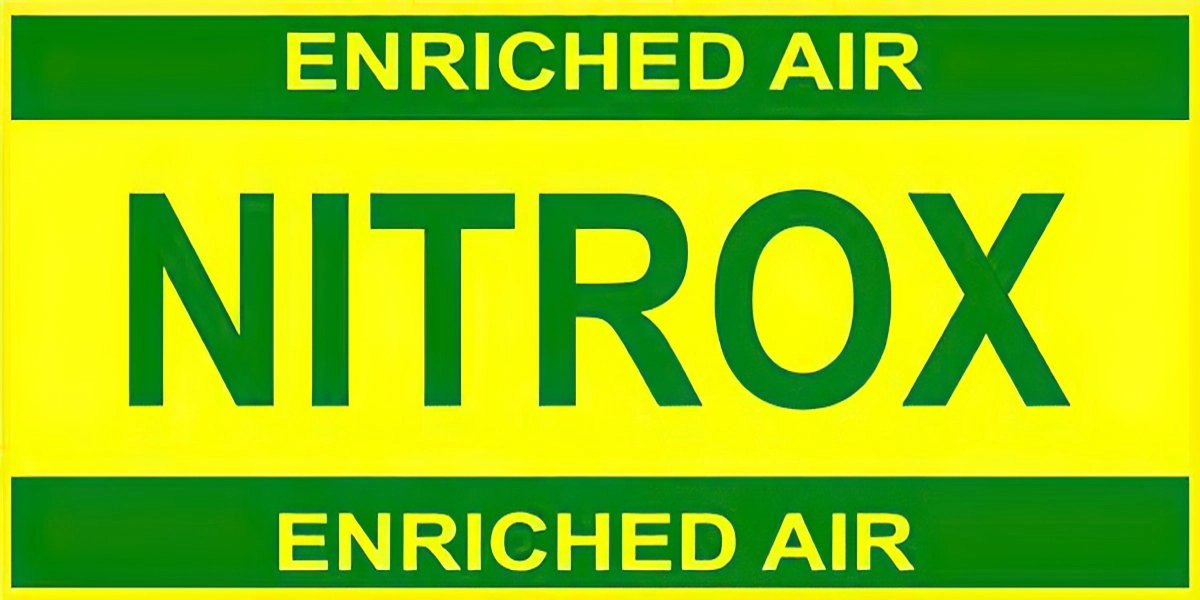
Blog #2
Exploring the duality of Nitrox
Beneath the shimmering surface of our oceans lies a hidden world, beckoning divers with its vibrant coral reefs and awe-inspiring marine life. Yet, the very air we breathe becomes a limiting factor as we plunge deeper, subject to the whims of nitrogen narcosis and decompression sickness. Enter nitrox, a breathing gas revolutionizing the industry, but not without its own complex considerations. This essay delves into the alluring benefits and lurking drawbacks of diving with nitrox, offering a balanced perspective on this potent tool.
The essence of nitrox lies in its composition. Unlike regular air, which is 21% oxygen and 78% nitrogen, nitrox boasts a higher oxygen content, with blends ranging from 26% to 40%. This seemingly minor tweak has profound consequences. By reducing the nitrogen component, nitrox allows divers to spend considerably more time underwater within safe no-decompression limits. Imagine exploring a breathtaking coral wall for 90 minutes instead of the standard 60 minutes on air – nitrox unlocks such exhilarating possibilities.
Furthermore, nitrox mitigates the dreaded nitrogen narcosis, that euphoric yet potentially dangerous effect resembling drunkenness at depth. With less nitrogen absorbed, divers remain sharper, making sounder decisions and avoiding risky situations. This enhanced mental clarity adds another layer of safety and enjoyment to deep dives.
The benefits of nitrox extend beyond extended bottom times and improved clarity. Shorter surface intervals between dives become a reality, thanks to the reduced nitrogen uptake. This translates to more time exploring underwater marvels, maximizing precious vacation time or scientific research opportunities. For technical divers pushing the boundaries of depth, nitrox becomes an even more crucial ally, allowing deeper penetration with minimized decompression requirements.
However, this potent brew of advantages comes with a cautionary label. Oxygen itself, when breathed at elevated pressures, can become toxic. Exceeding the maximum operating depth for a specific nitrox blend invites the risk of oxygen toxicity, potentially leading to seizures and other neurological complications. Precise planning, meticulous depth awareness, and adherence to decompression tables become paramount with nitrox.
Another hurdle lies in the logistical aspects. Not all dive shops offer nitrox fills, requiring divers to plan ahead and potentially accept higher costs compared to regular air. Specialized training and certification become mandatory, equipping divers with the knowledge to handle nitrox safely and effectively.
In conclusion, nitrox stands as a powerful tool, not a magic potion. Its alluring benefits – extended dives, sharper minds, and deeper exploration – are real, but must be weighed against the inherent risks and logistical considerations. For divers embracing proper training, meticulous planning, and responsible practices, nitrox can unlock a truly enriched underwater experience. However, for those seeking a simpler, “air and go” approach, regular air remains a perfectly safe and rewarding option.
Ultimately, the choice between nitrox and air boils down to individual goals, experience, and risk tolerance. As with any potent tool, understanding its strengths and limitations is key to reaping its rewards while navigating its potential pitfalls. Only then can we truly embrace the duality of nitrox, venturing deeper into the underwater realm with both confidence and caution, forever captivated by the silent symphonies that await beneath the waves.
Social share


 ICONIER Digital Agency
ICONIER Digital Agency